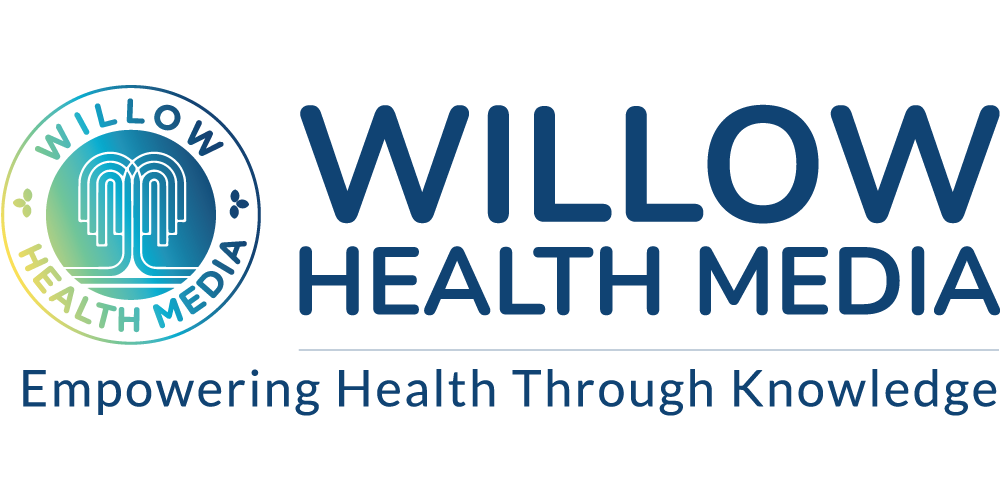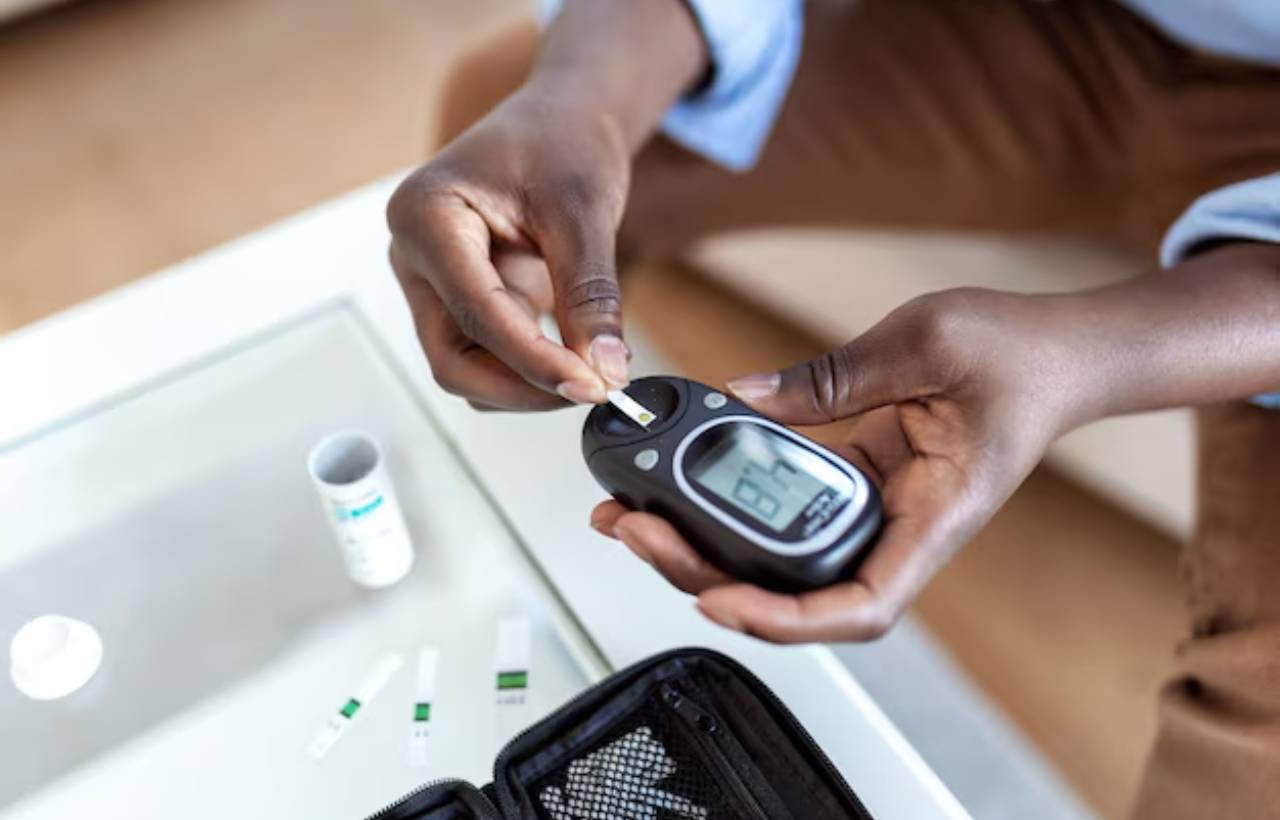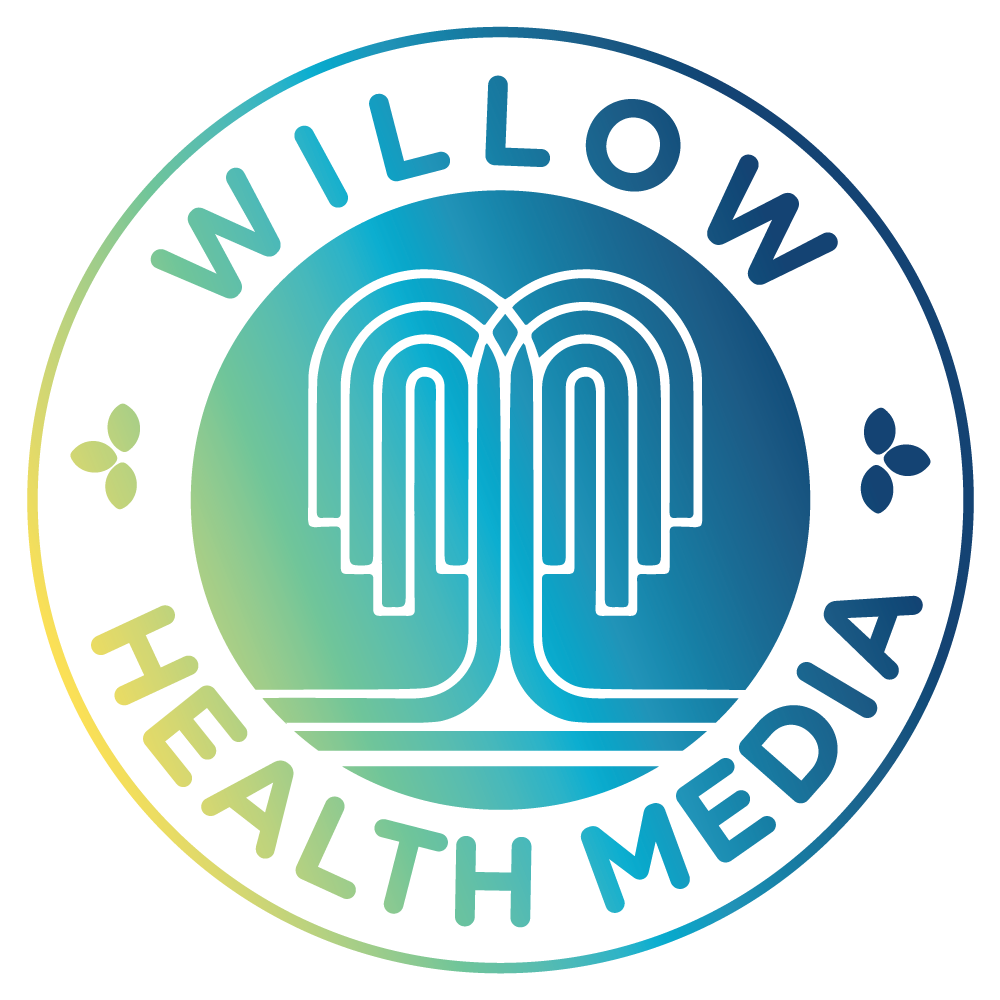World Diabetes Day (November 14) raises awareness about diabetes, a condition affecting 537 million people globally.
WHO estimates 1.5 million deaths annually due to diabetes, which causes kidney failure, blindness, and cardiovascular diseases.
In Kenya, diabetes affects approximately 4.5% of the population, with a higher prevalence in men and increasing with age.
Normal blood sugar levels are between 4.0-6.0 mmol; readings of 6.0 mmol or higher may indicate diabetes.
A 2022 study estimated the annual cost of diabetes in Kenya at Ksh24.6 billion (USD 230 million), with urban areas bearing a higher economic burden.
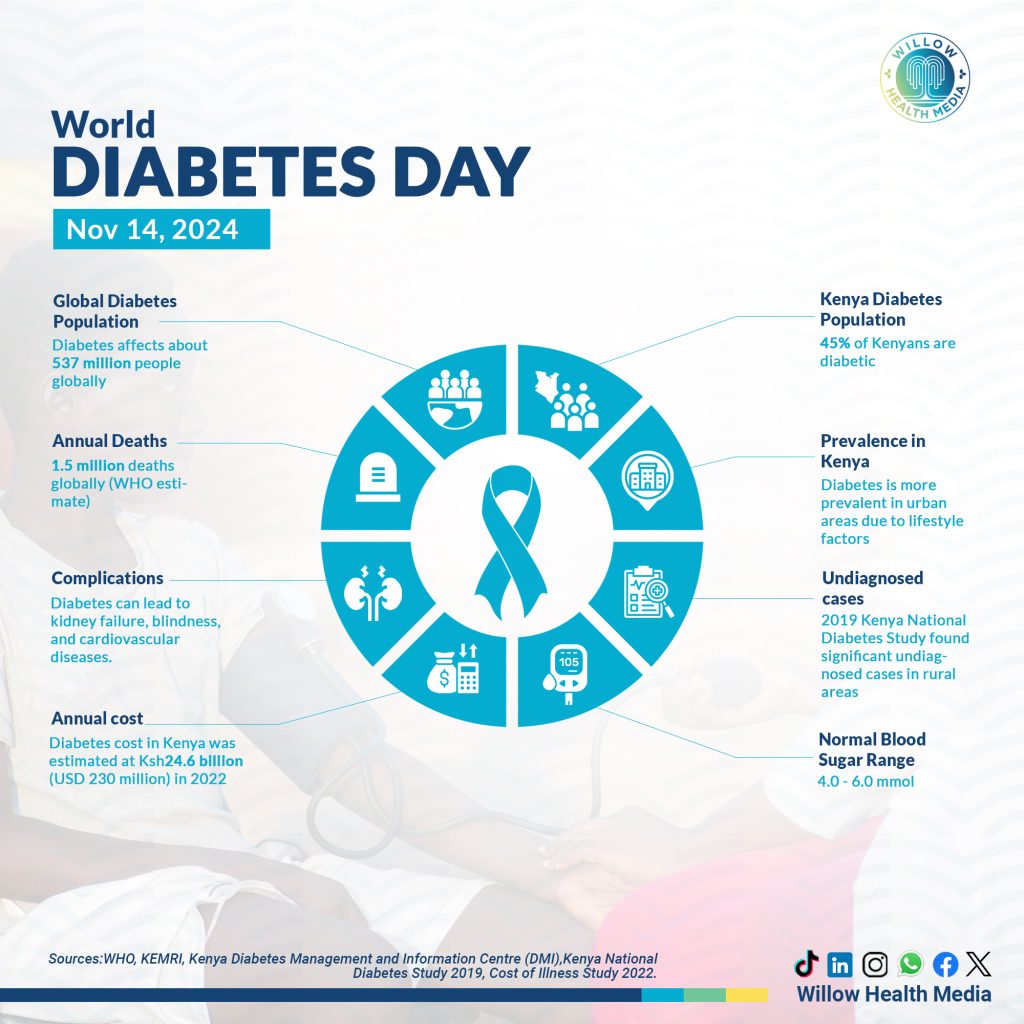
Nairobi, as the capital city, has a significantly higher prevalence of diabetes, driven by lifestyle changes such as poor diets, sedentary lifestyles, and increased stress levels. A study by the Kenya Medical Research Institute (KEMRI) found that about 7.5% of Nairobi’s population has diabetes.
Diabetes rates are rising in Mombasa, with an increasing number of adults diagnosed, especially in low-income communities with poor access to health education. According to a 2018 study by the Kenya Diabetes Management and Information Centre (DMI), approximately 5.1% of Mombasa’s population is diabetic.
In Kisumu, the prevalence is also rising, particularly among the elderly and those with unhealthy eating habits. A study in Kisumu County found that the rate of diabetes in the adult population is about 6%.
Eldoret, which has seen rapid urbanization, faces a rising incidence of diabetes, with an estimated prevalence of 4.2% based on local health surveys.
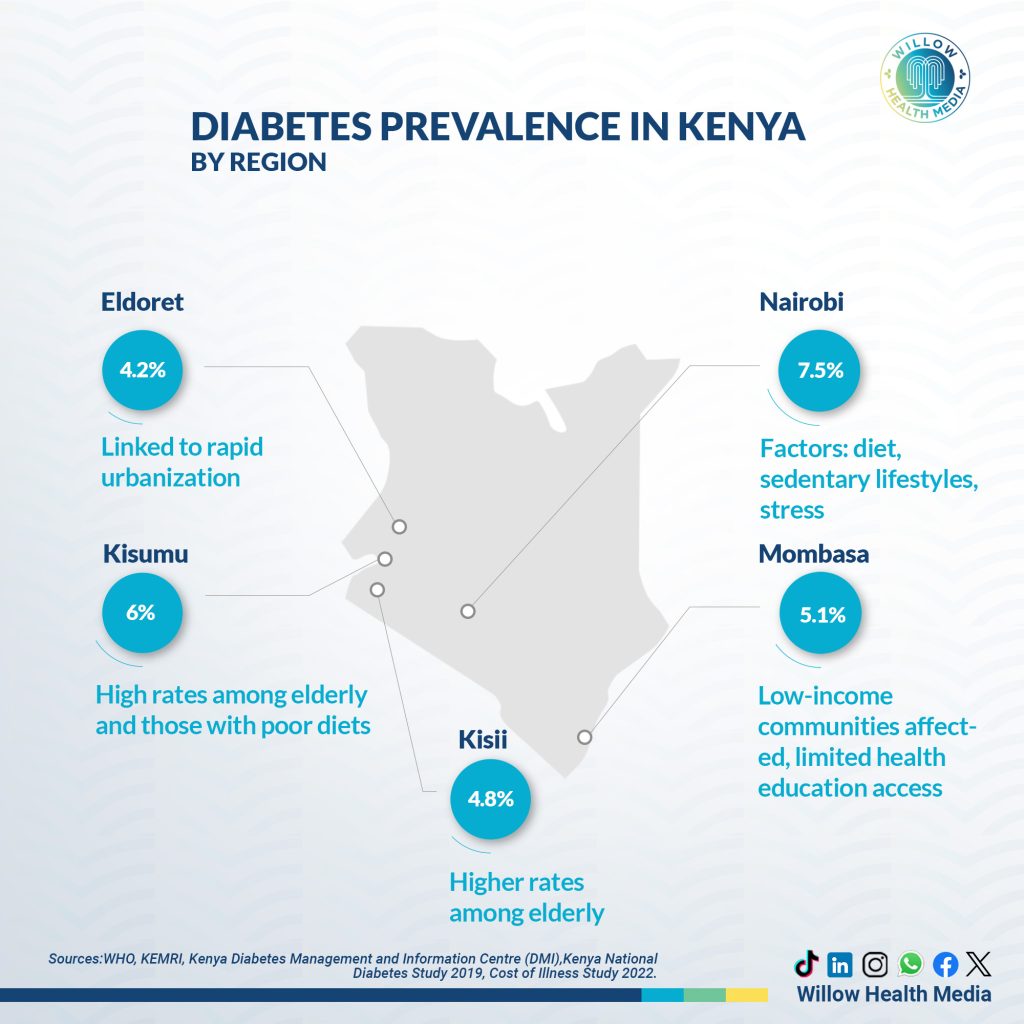
The prevalence of diabetes in Kisii has been reported at 4.8%, with a higher incidence among the elderly, which is consistent with nationwide trends in diabetes being more common in older populations.
The prevalence of diabetes is higher in urban areas due to lifestyle factors, but rural areas are increasingly affected due to changing diets and better access to diagnostic services. A study by the Kenya National Diabetes Study in 2019 showed that while urban centres had higher diabetes rates, rural areas saw a significant rise in undiagnosed cases.
This year’s theme emphasizes access to diabetes care, including insulin and blood glucose testing, as well as lifestyle changes to prevent Type 2 diabetes.
WHO advocates for affordable care, education, and policies promoting healthy lifestyles to manage and prevent diabetes.
Sources: WHO, KEMRI, Kenya Diabetes Management and Information Centre (DMI), Kenya National Diabetes Study 2019, Cost of Illness Study 2022.
